“The arts, it has been said, cannot change the world, but they may change human beings who might change the world.” - Maxine Greene
Vision
Education, like Design, is a mother discipline; it influences every other field because it is about learning. We are always learning: learning by interacting with the world in diverse ways- cognitively, sensorially, experientially, emotionally, and aesthetically. How can art and design be used to enhance our learning experiences?
The Creative Education program at Srishti is a broad-based transdisciplinary program. It transcends a narrow way of looking at ‘education’ and opens up multiple possibilities of the future of learning. It looks at innovation and creativity in diverse learning spaces and systems through art, design, and technology. It also works in a wide range of art, design and technology through the lens of learning and facilitation.
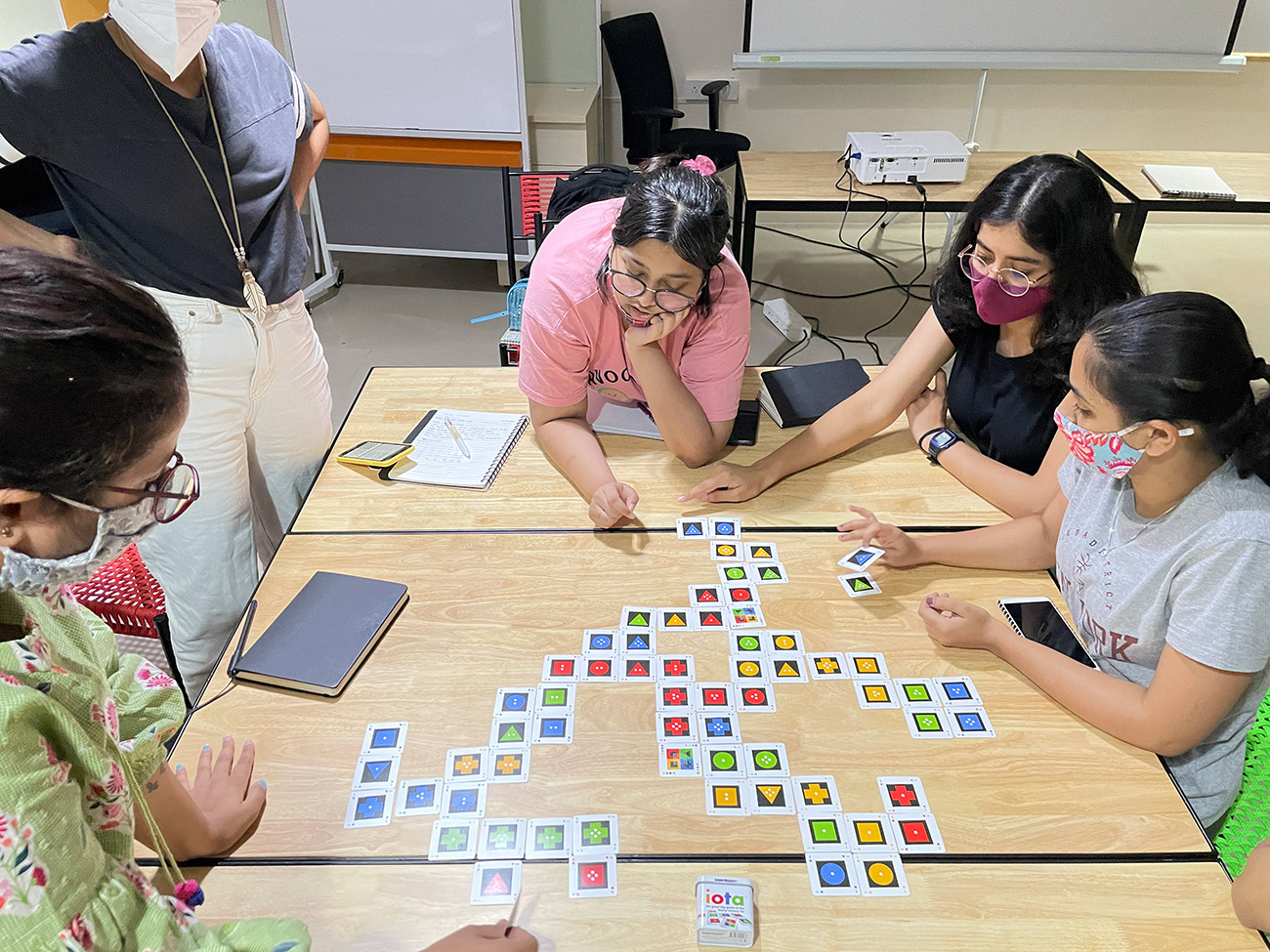
Image: Engaging with games
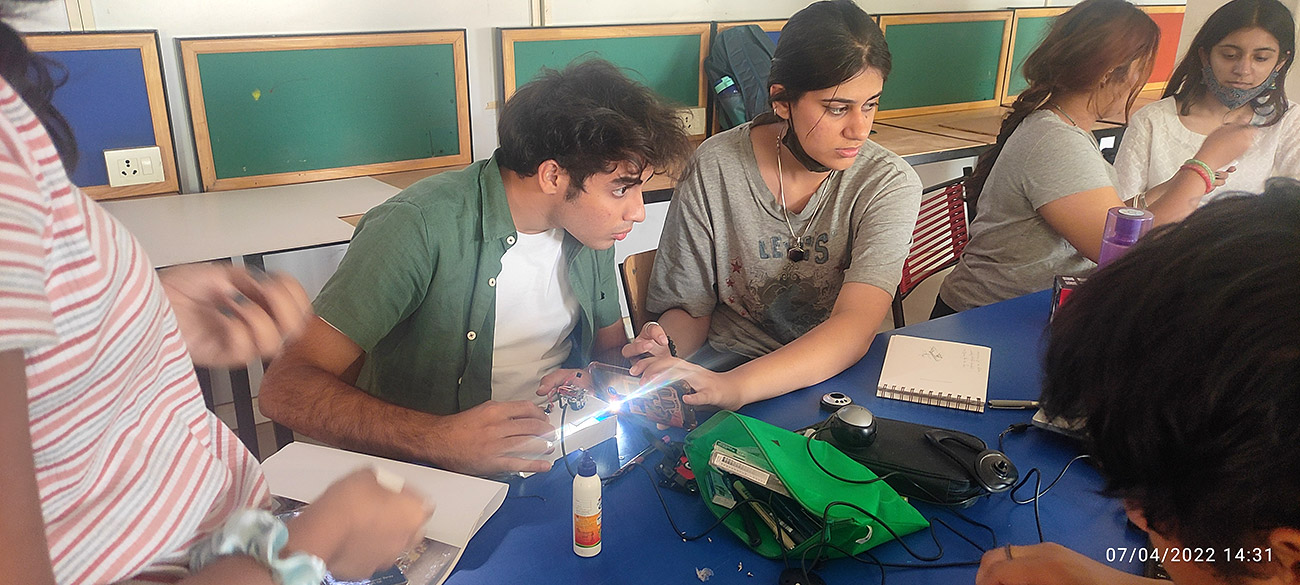
Image: Building DYI microscope
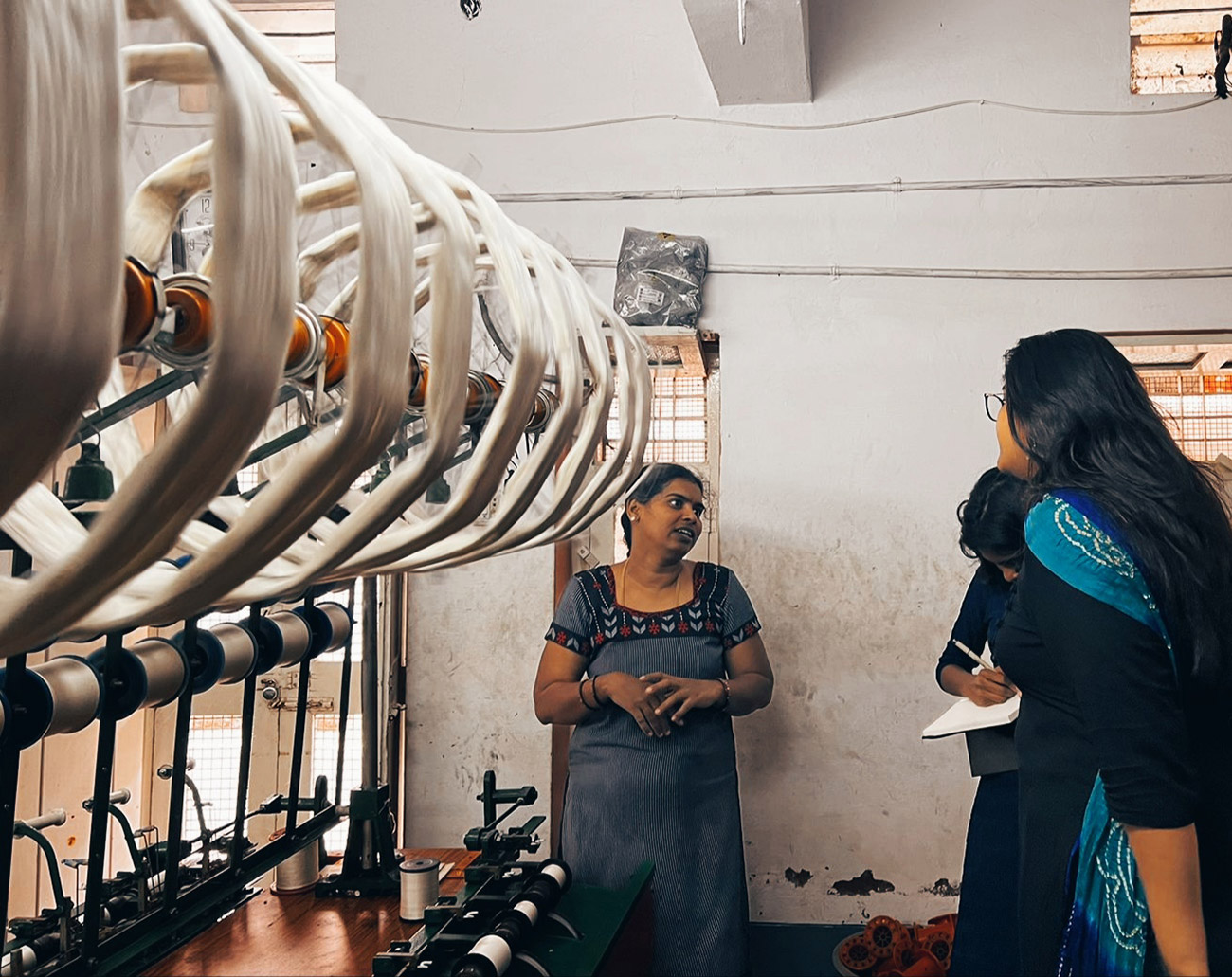
Image: Design Research and interacting with communities
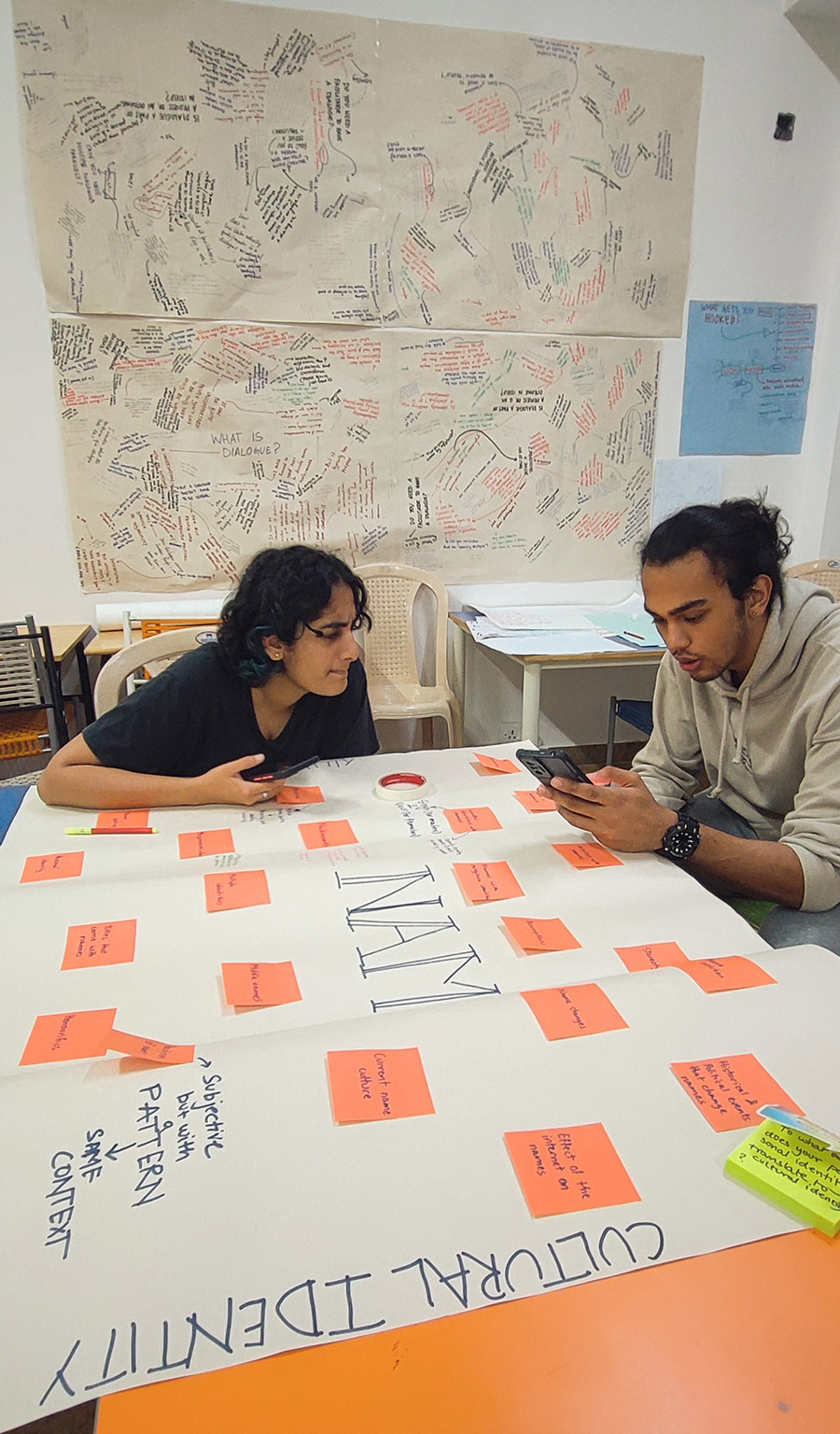
Image: Design Research and interacting with communities
Uniqueness
This is indeed a unique futuristic course ever imagined in India where art, design and technology are interspersed with learning, pedagogy, storytelling and systems thinking. It connects the past with the future, nature with culture, hands-on with technology, thinking and making. This course is for anyone who is interested in using art and design to reimagine learning and education, as content and context, as process and outcomes, as systems and services, as spaces and places.
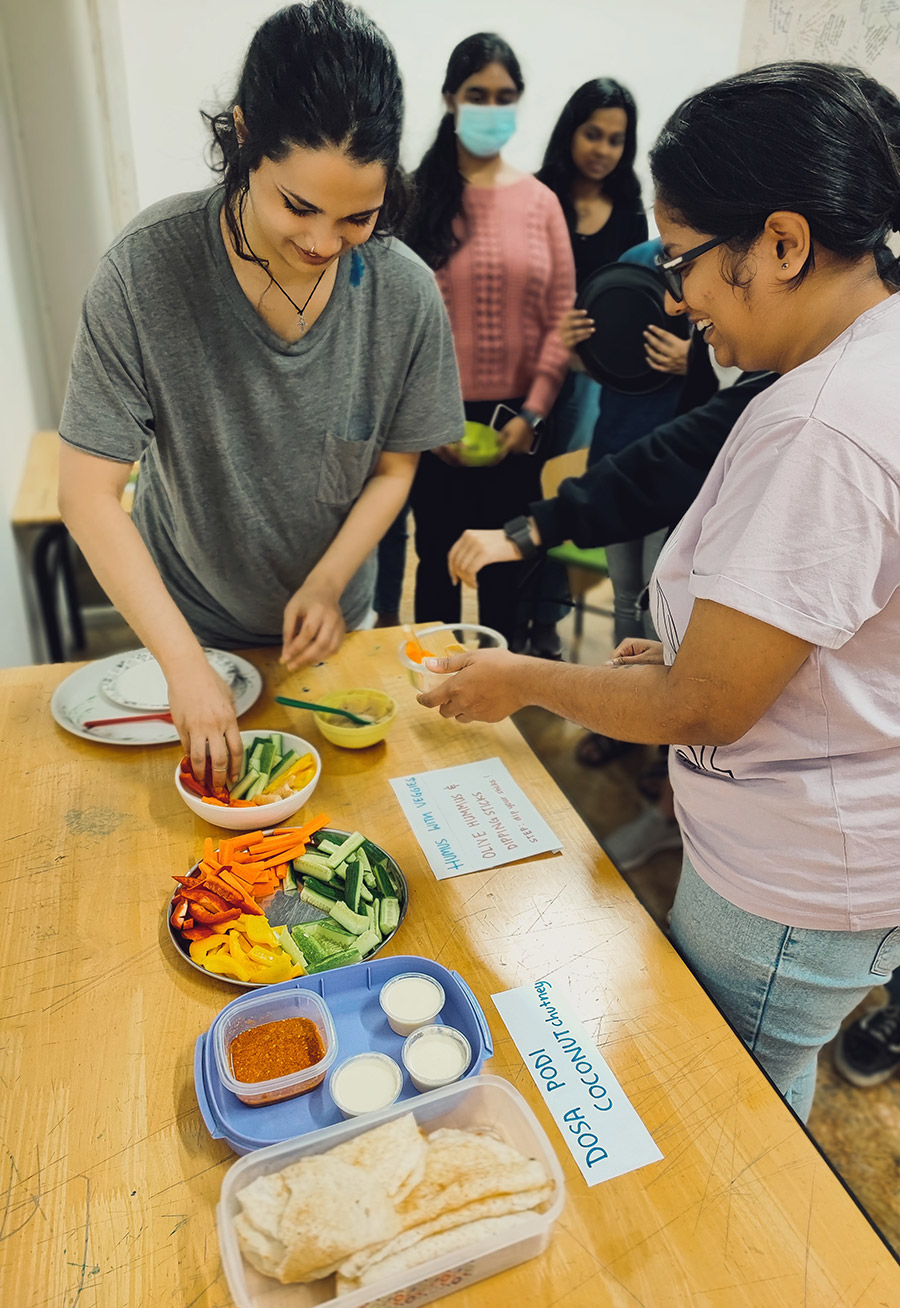
Image: Food as a trigger for conversation
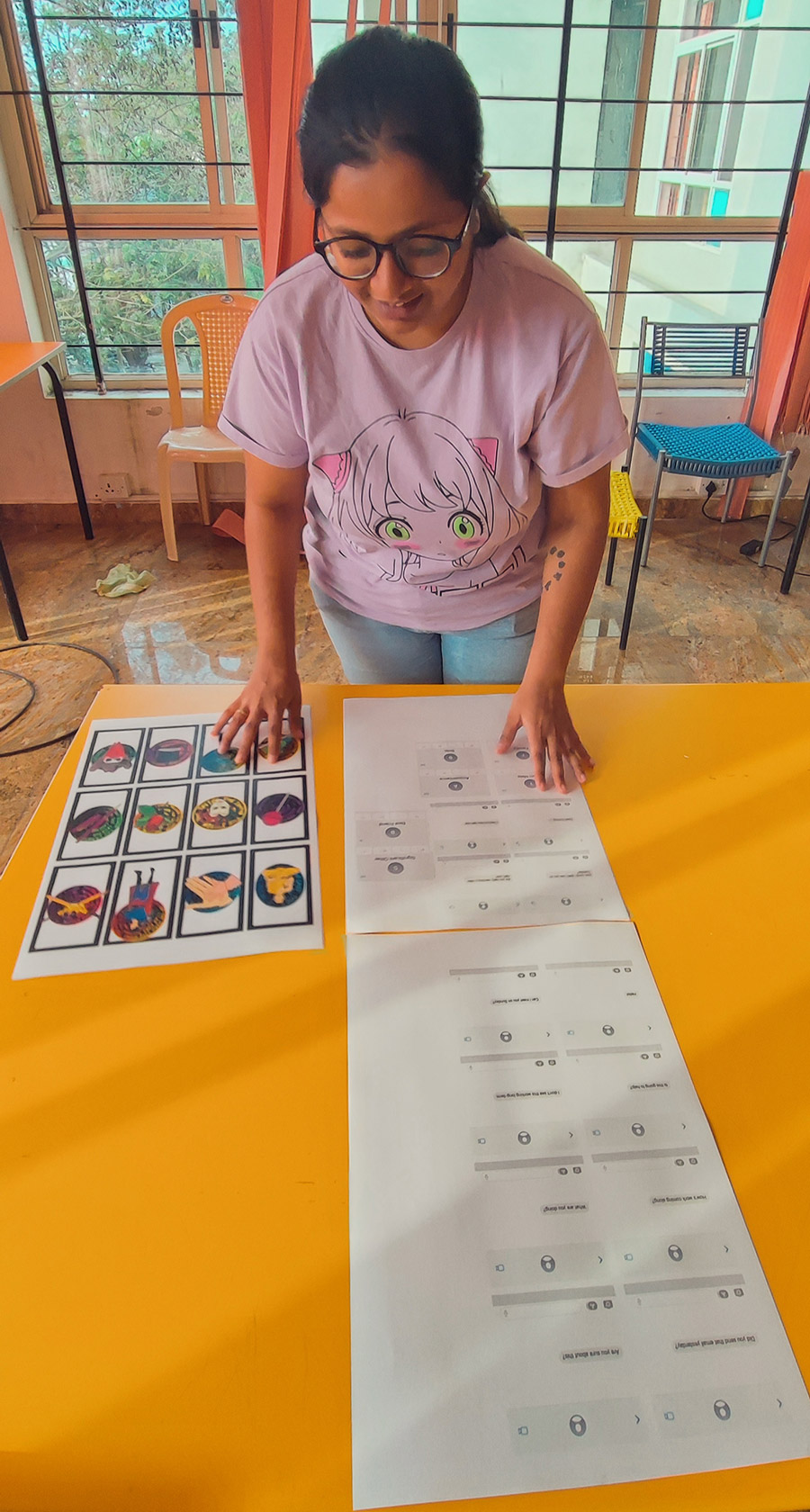
Image: Making a toolkit
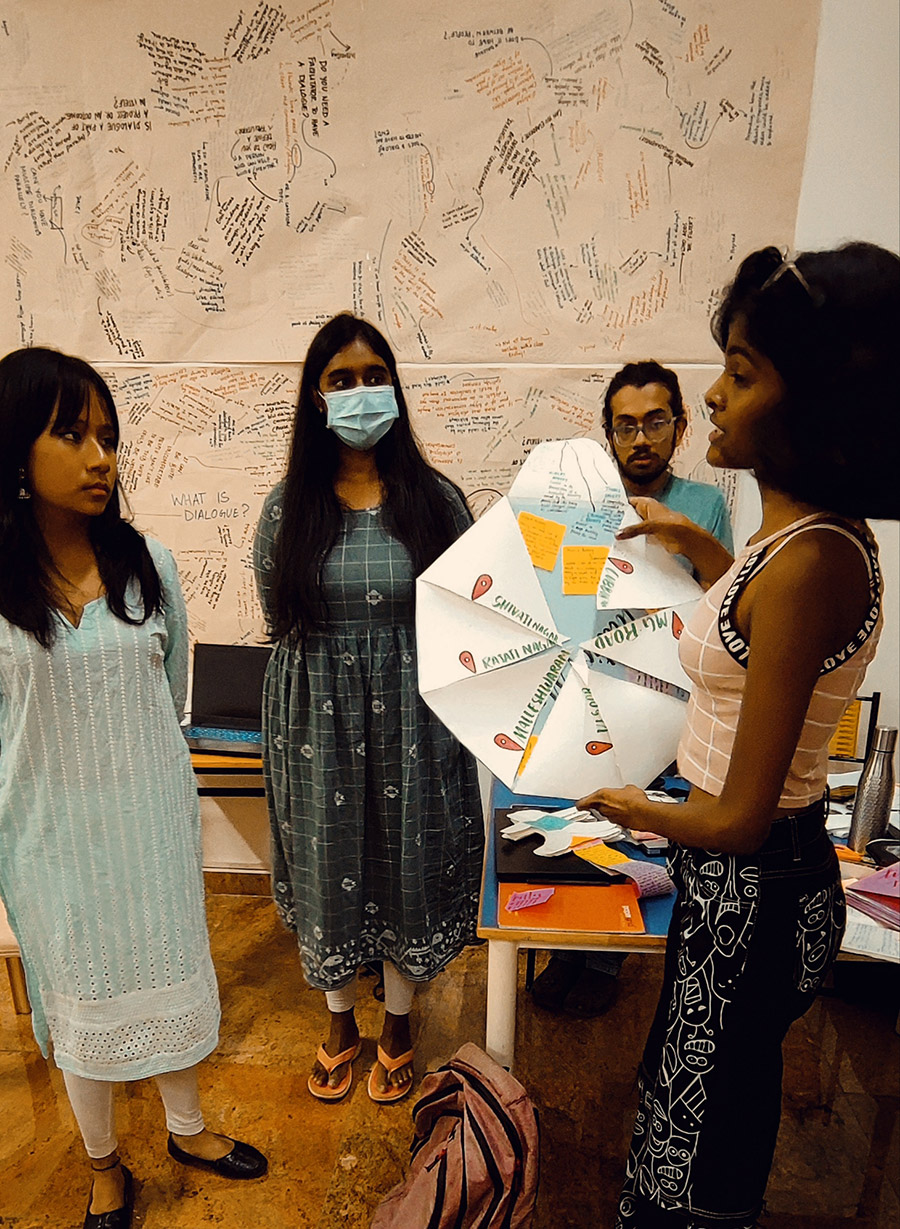
Image: Mapping
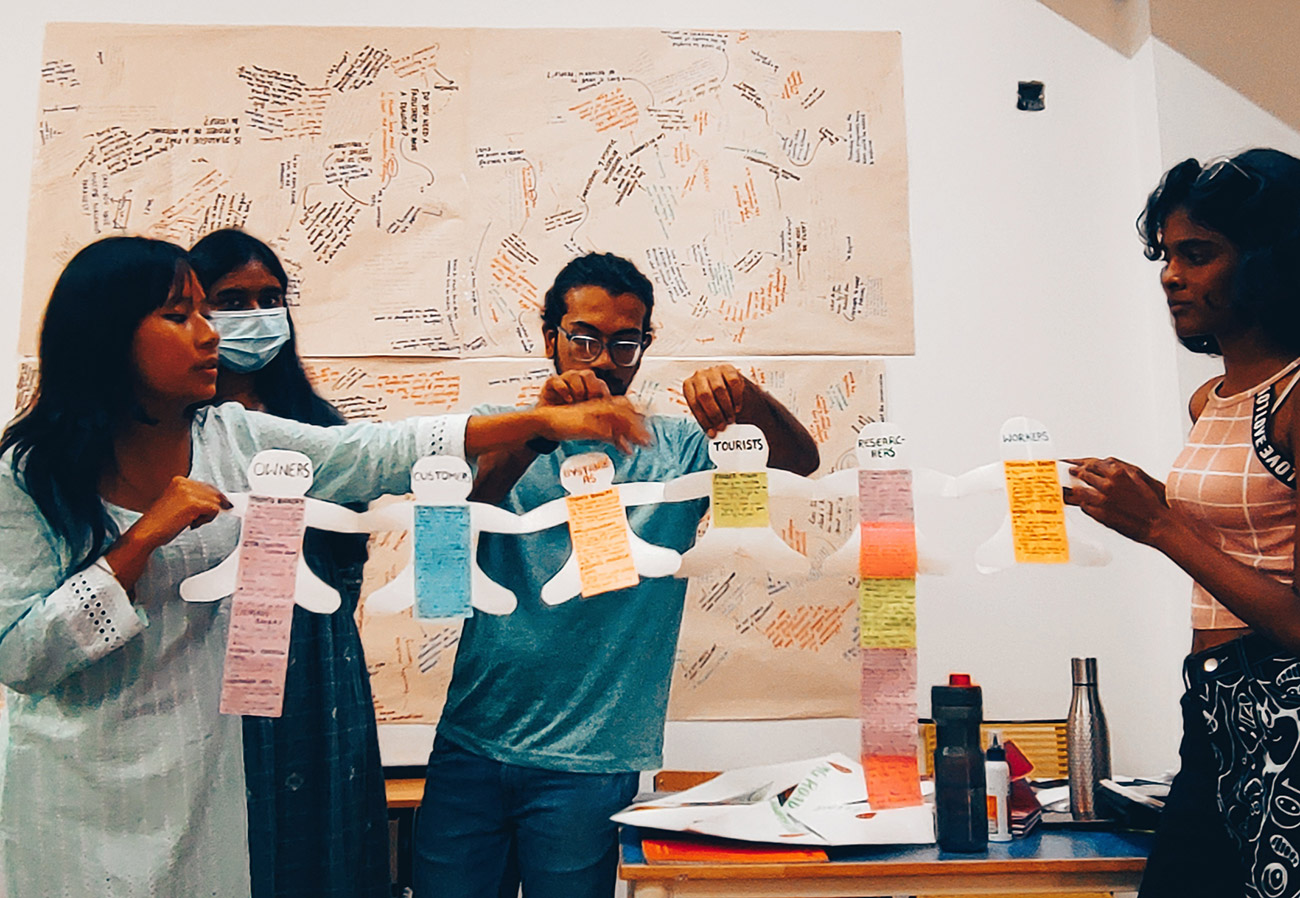
Image: Mapping
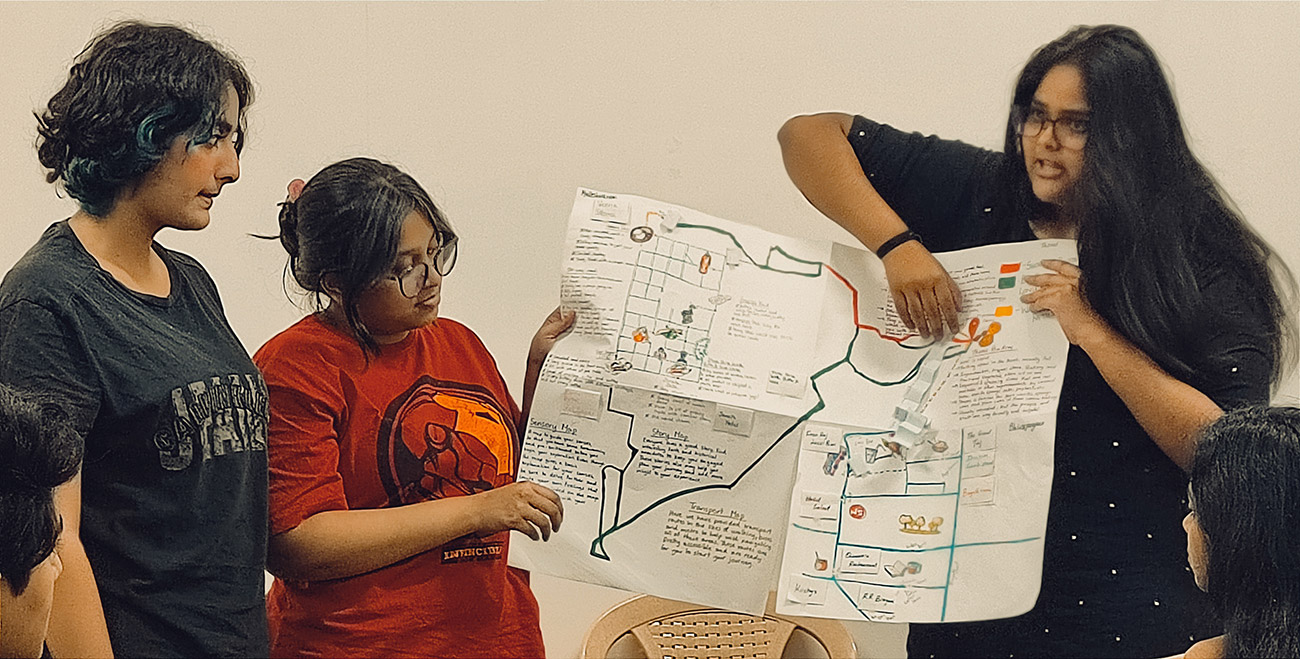
Image: Mapping
This unique positioning allows the course to look at learning and education in an expansive way, beyond just a traditional perspective. It also focuses on understanding any potential user or stakeholder as a learner, which shifts the fundamental way one looks at them. There is a focus on understanding various contexts around learning.
During the 4 years of exploring Creative Education, the aspiring practitioners engage in conversations, reflections, contemplations, collaborations, explorations, experimentations, ideations. They also take a deep dive into ways of being, doing, thinking, making, sensing and leading.
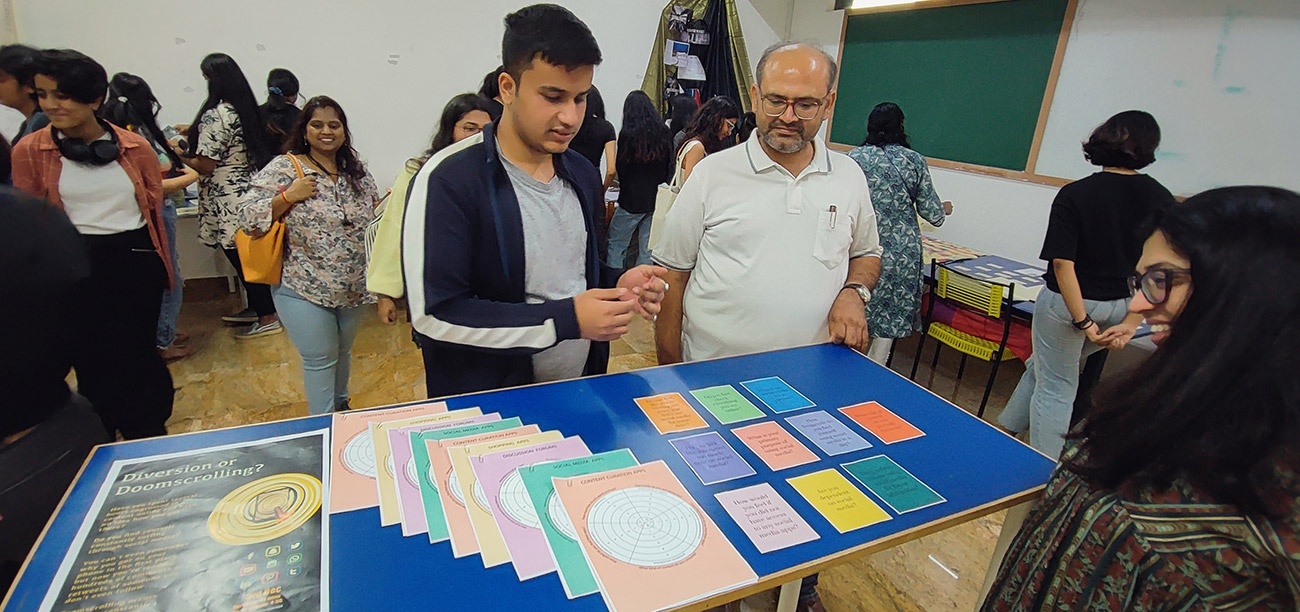
Image: Open House
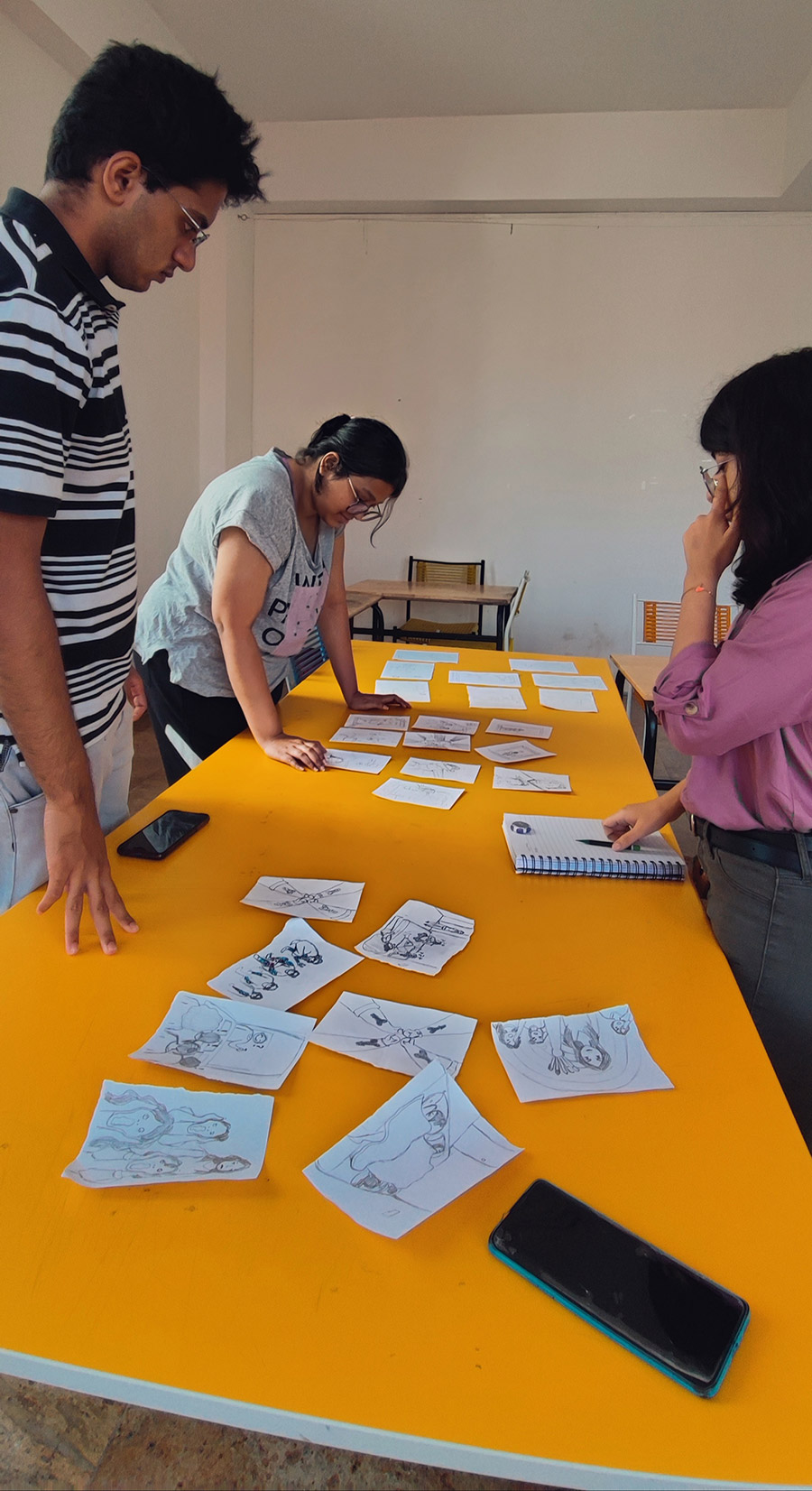
Image: Picture Story Shuffle
What does the program equip an aspiring practitioner with?
- Approach and tools: The program equips the aspiring practitioners of Creative Education with tools, processes, modes, media and methods to facilitate learning, design learning systems, objects, tools, frameworks, products and spaces for formal and informal, traditional and non-traditional learning environments. Design is an approach which is used in how this entire program is structured
- Capabilities of Facilitation: It also enables them to practice design as an act of facilitation while also designing facilitation for various purposes. Facilitation of various kinds is one of the most highly aspired and valued competence sought out in a wide range of domains and disciplines today
- Capabilities to engage with a wide range of contexts, modes and media: Aspiring practitioners of Creative Education learn to create content using various modes and media, design teaching and learning artefacts, curate learning experiences in various contexts, and also contribute to organisations working in impact spaces. They can work in businesses or start-ups or with corporate houses to transform organisational culture. The aspiring practitioners may choose to build or work in active maker spaces to foster explorations; design interactive learning exhibits for visitors in public learning spaces such as parks, zoos, conservation and interpretation centres and museums for innovations with ecological intelligence; Outdoor experiences from the city streets to wilderness for expeditionary learning going beyond tourism; facilitate learning in ecological spaces or work on projects in future that are not even heard of today. They may learn how to work in urban public and community spaces and support life-long learning in schools, organisations and communities, or work for caregiving environments such as hospitals and orphanages as also spaces for healing practices and mindfulness. The aspiring practitioners are capable of reimagining and transforming any mundane learning spaces into extraordinary explorative spaces.
- Story- telling versus Fact telling: Conveying narratives and explanations using various devices and disciplines
- Future of work and technology : The program enables them to contribute to the future of work, the future of learning, the future skills and hence the future of the world. The program also equips them to explore learning design using technology creatively and responsibly.
- Developing ideas and prototypes: New media and digital platforms for communication, collaboration and co-creation; Low cost smart tools and high performance technologies; Edgy toys and materials
- Making one’s own path: Most importantly the program equips the aspiring practitioners to find and carve their own path, by working in various areas and disciplines intersecting with each other and also create new work for others through entrepreneurship. The program certainly fosters design-led leadership skills and qualities
- Re-thinking and re-imagining: We learn best when we experience, participate and make. Creative Education at Srishti rethinks current educational practices and prioritises active making and doing, aesthetic experiences and participatory practices to formal and informal learning environments. The program builds potential for future work across a multi-disciplinary range of domains, knowledge bases and traditions in a manner that reflects creative wisdom in action.
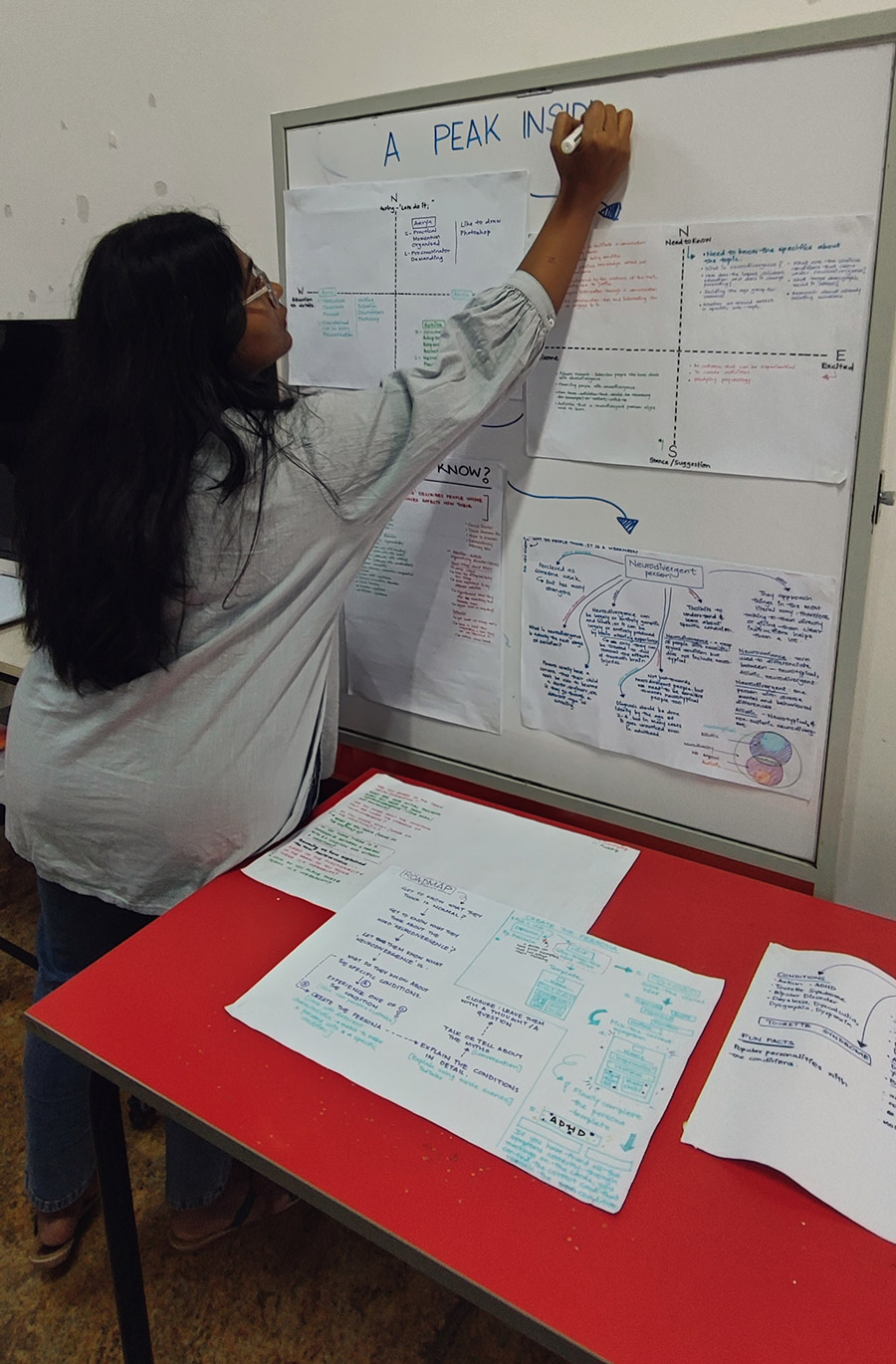
Image: Process mapping
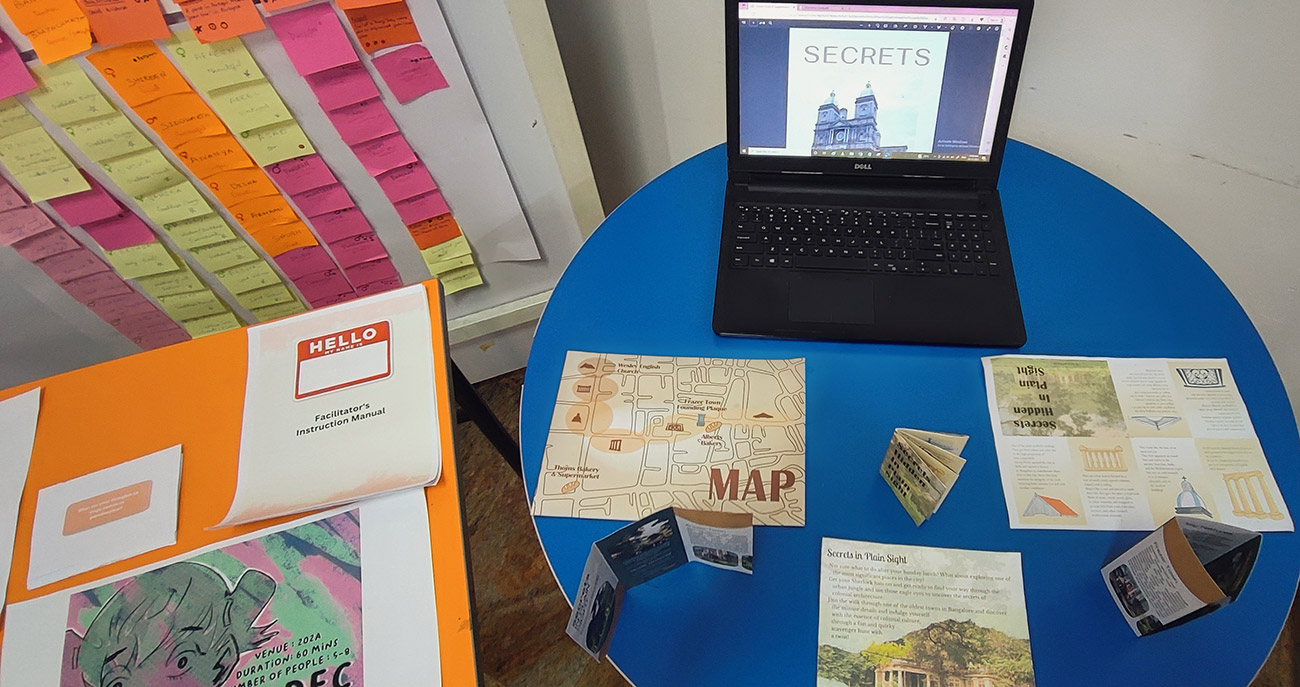
Image: Prototyping
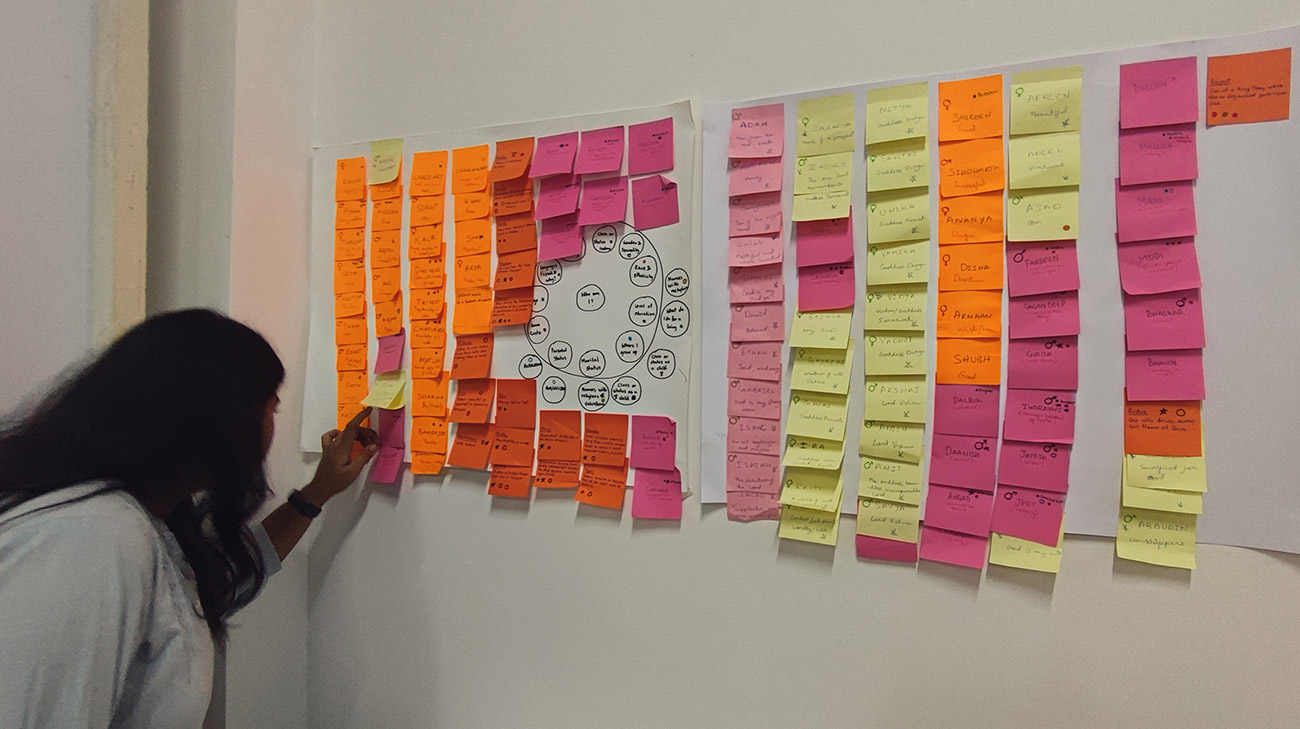
Image: Research
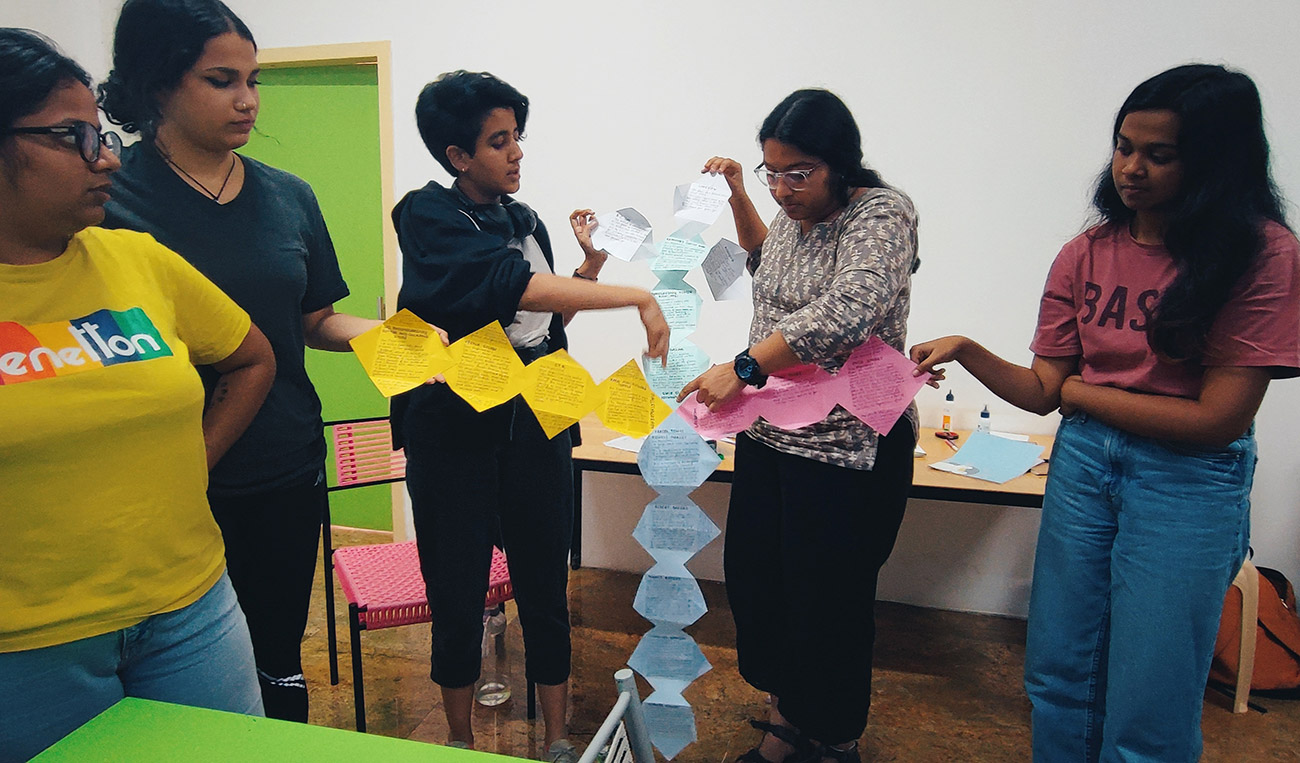
Image: Storytelling through unfolding maps
Why will someone choose Creative Education ?
- Exploring myriad possibilities of art and design: The Creative Education program engages with the myriad possibilities that art and design could and should bring to the sphere of learning or use learning as a way of approaching any form of design.
- Making impact globally: In the current world, often impact created in various contexts: geo-political, socio-cultural, technological, ecological, economic and the like, is framed through the language of the United Nations Sustainable Development Goals (UN SDGs). Out of the 17 SDGs, Quality Education (SDG 4) is not only one of the most significant one, but in an inter-connected and emergent ways of looking at the SDGs easily reveal how widely ‘education’ is defined and hence how it connects to all other SDGs like a foundation.
- Fostering and honing facilitation skills: One of the most important capabilities most organisations or initiatives seek now is the ability to facilitate. Those who believe in a future with deeper mutual understanding, collaborative relationships and lasting positive cultural change rooted in systems change, value facilitation skills that can enable transformation. The Creative Education program unlocks a wide range of future-oriented and emergent facilitative career opportunities.
- Relevance in contemporary India: With the new National Education Policy 2020, there is an increasing need for creative-educator-artists-designers who can use an expansive approach with a strong emphasis on art, science and technology. They can constantly iterate, experiment and playfully tinker to refine and test prototypes and craft learning experiences both collaboratively and individually.
- Amalgamation of design, art and learning: At the undergraduate level, the program brings the advantage of being exposed to various art and design disciplines and practices. Aspiring practitioners learn through sketching, movement and performance, mapping, materials and critical making and technology (both high and low). These experiences will inform their work in Creative Education, giving them the tools to make their voices heard.
- Act of mediation: Creative Educators can mediate between traditional, community and technological learning spaces. They can create content responding to learners and their environments, design artefacts, aids, systems and spaces for teaching and learning.
- Catering to a wide range of interests: The program caters to a wide range of interests in the contexts or processes of learning. For example, for some the focus could be on community education and curating learning experiences in urban public spaces or bookstores. Those interested in STEAM learning (Science, Technology, Engineering, Art and Mathematics) can design maker spaces to foster exploration. Others with love for the environment can promote ecological sensitivity for public education or design interactive exhibits for visitors in wildlife interpretation centres, parks, and zoos etc. Those with interest in social issues can focus on designing learning for inclusivity and diversity. Ultimately the aim is to transform various learning spaces whether be at schools, labs and libraries or corporate offices, social and ecological non-profits and other learning environments.
- Mentored by transdisciplinary practitioners: It allows students to explore their creative interests and chalk their learning track with mentoring by a wide range of faculty drawn from a pool of artists, designers, critical makers, designers, entrepreneurs and philosophers.
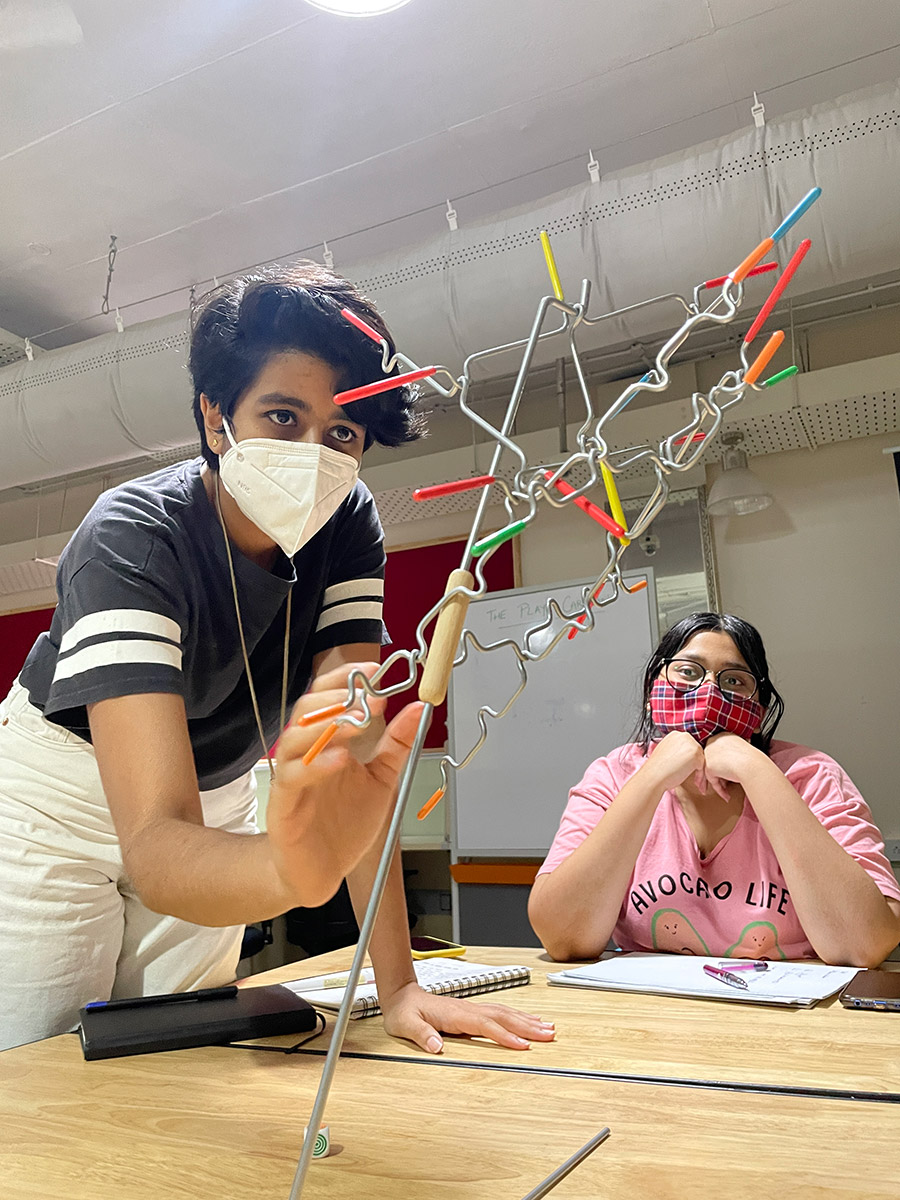
Image: Toys to play with
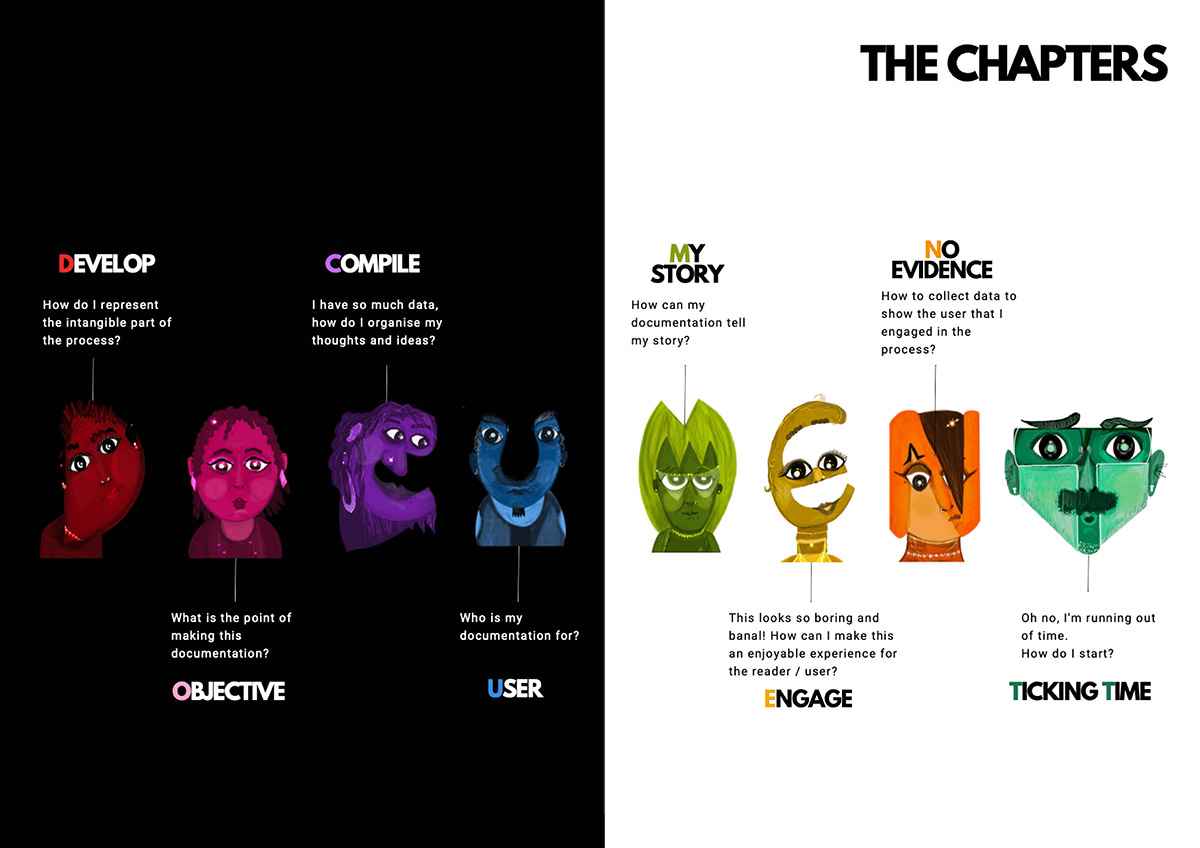
Image: Students exploring documentation
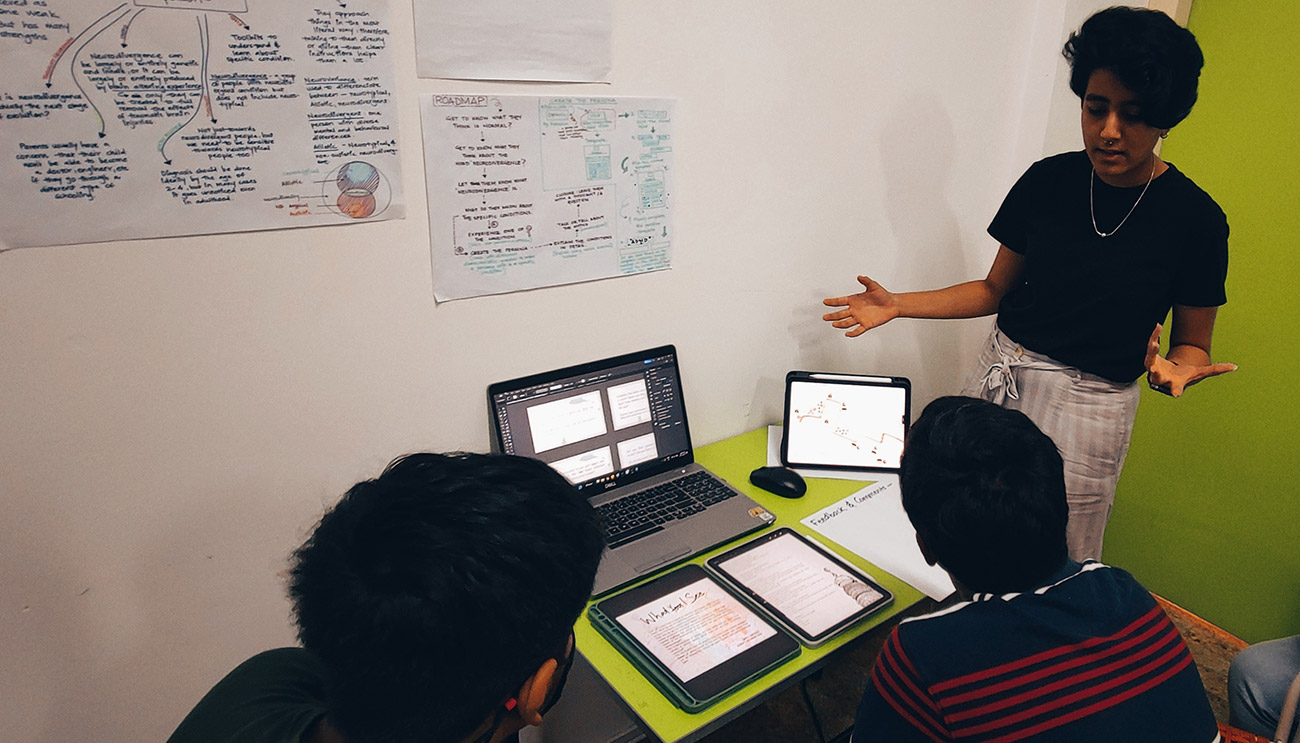
Image: User testing
Core Values
This course is built around the following core values:
- Making to Think: active making, thinking hands, immerse in the process
- Beginner's mindset: curious, speculative, experiment and explore
- Passion: use play and iterate to allow for imagination
- Lifelong learning: a way of being, knowing, persevering as a way of life
- Equanimity: being aware, courageous in uncertain and unpredictable circumstances
- Empathy: understanding people in different situations and contexts and act from this position.
- Embodiment: recognition of the body as a learning site
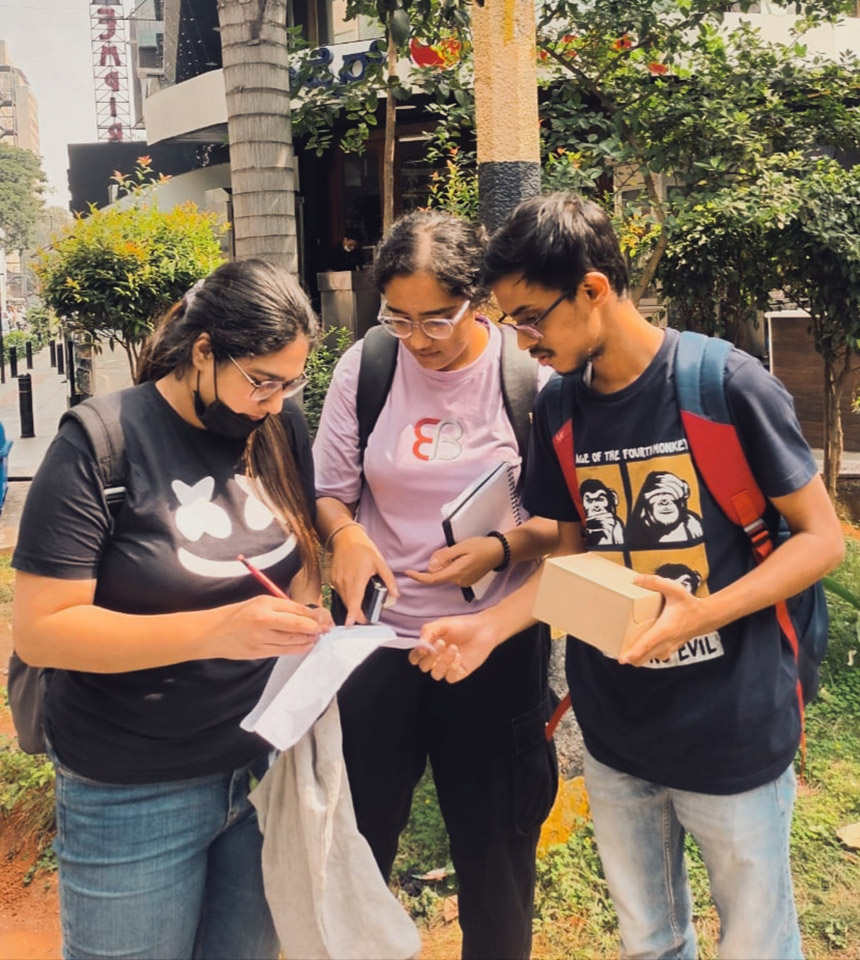
Image: User testing
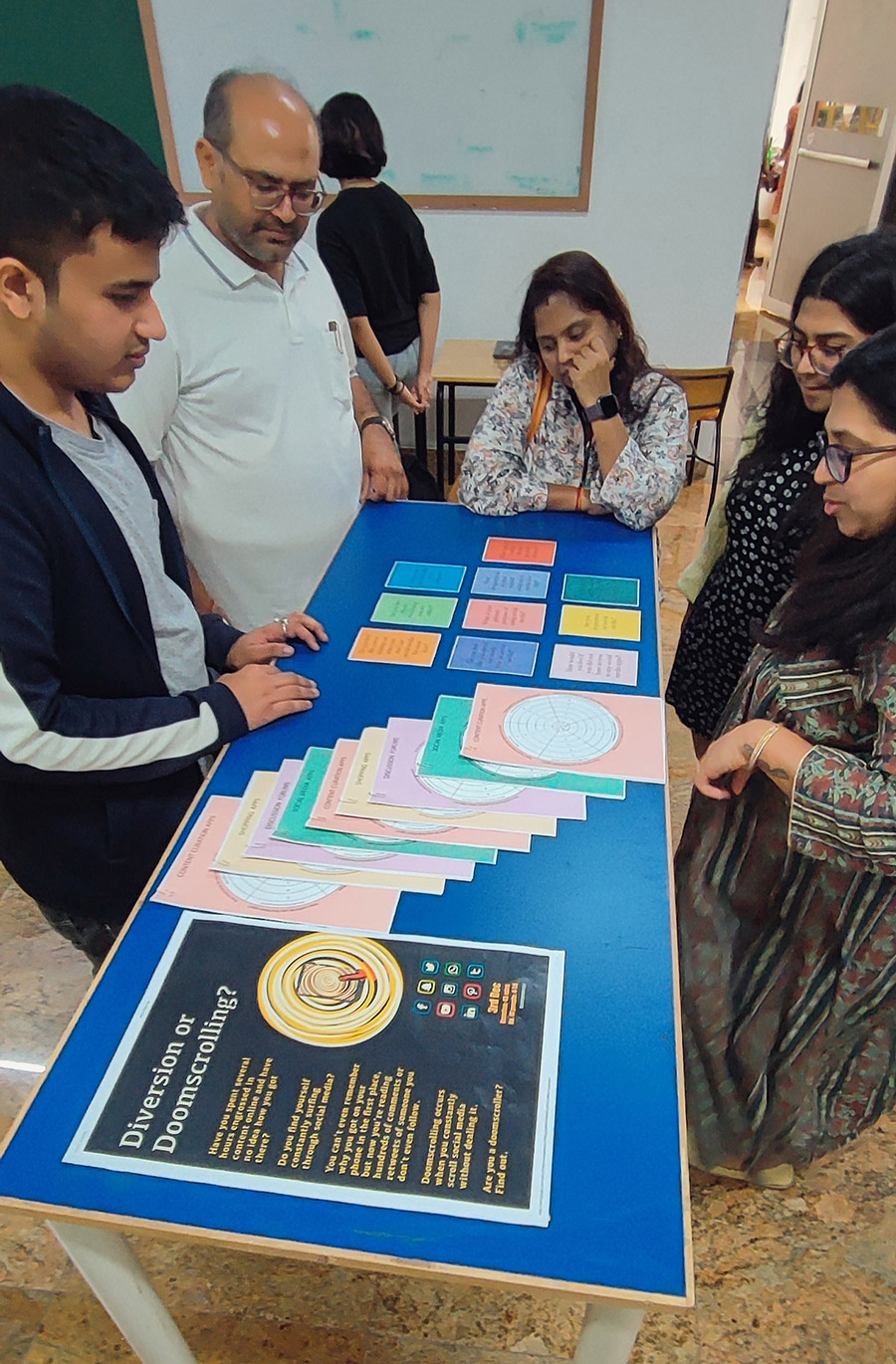
Image: User testing
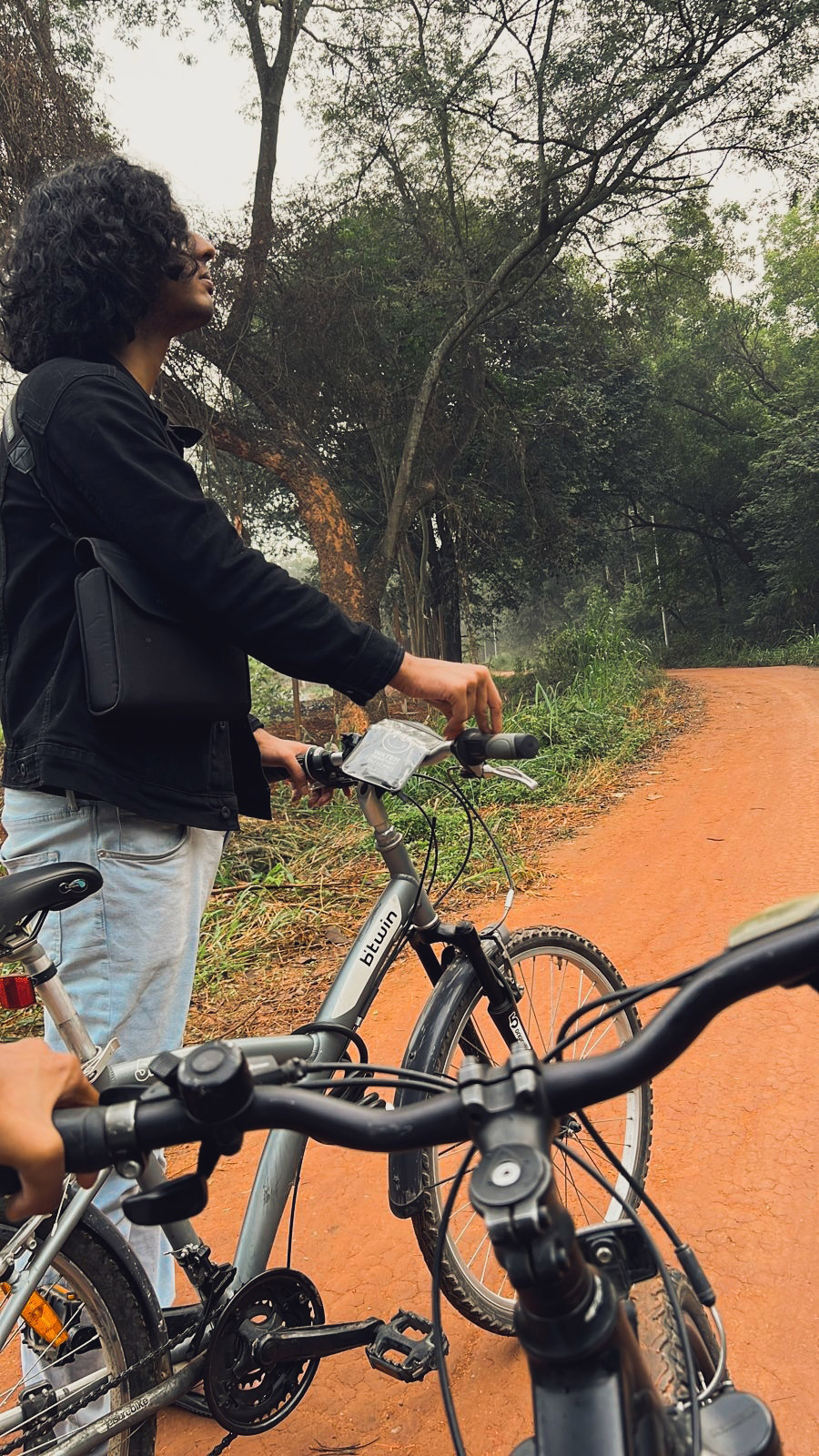
Image: Walking as a way of sense-making
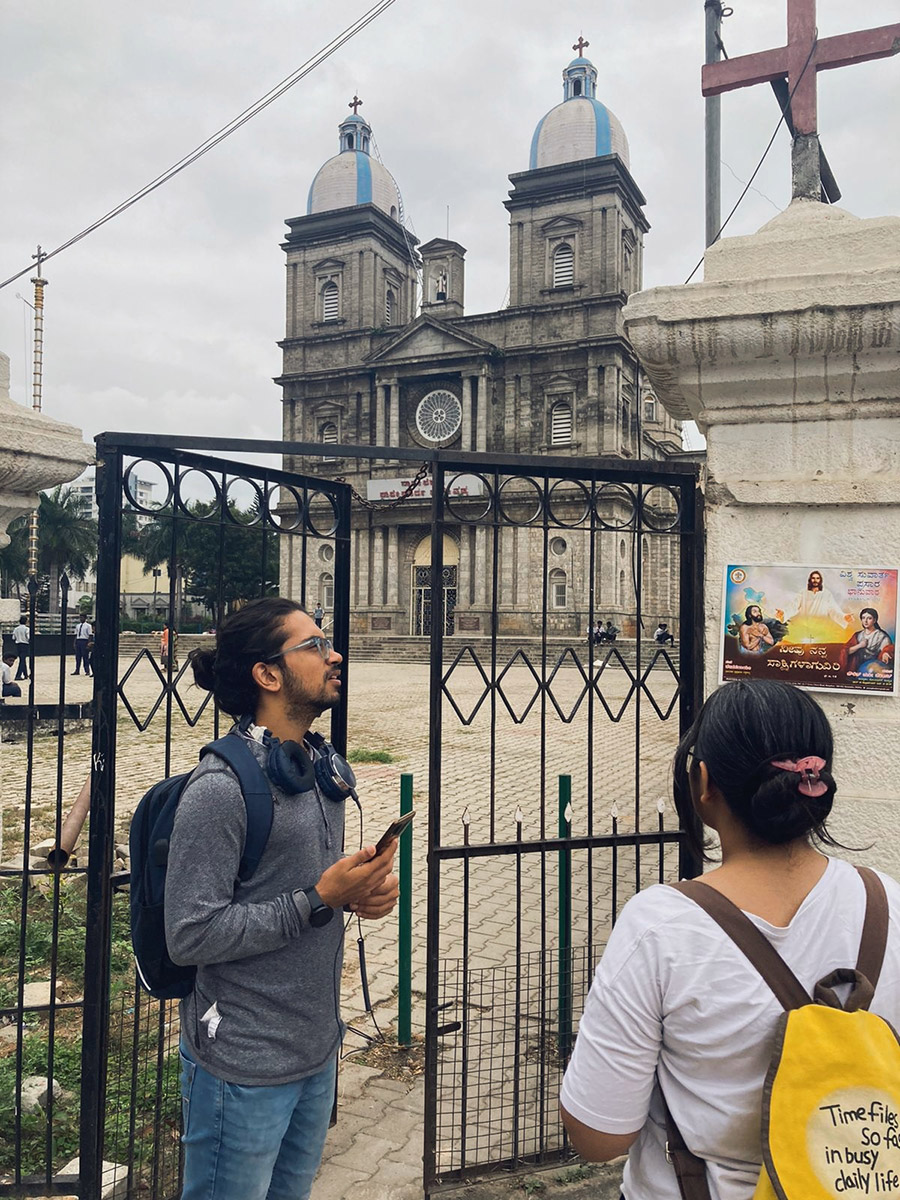
Image: Walking as a way of sense-making
Learning Approach
The learning approach of this program will include:
- Playful learning involves experimentation, testing boundaries and iteration
- Mindfulness and reflective practice
- Actively working on meaningful projects
- Framing failure as an opportunity for learning
- Learning through absorbing or osmosis from master practitioners/artists
- Building on one another's work; collaborating and sharing ideas.
- Collaboration with peers, practitioners and the community in real-world situations
- Bringing together theoretical and practical knowledge and experience
- Designerly ways to draw upon insight for action
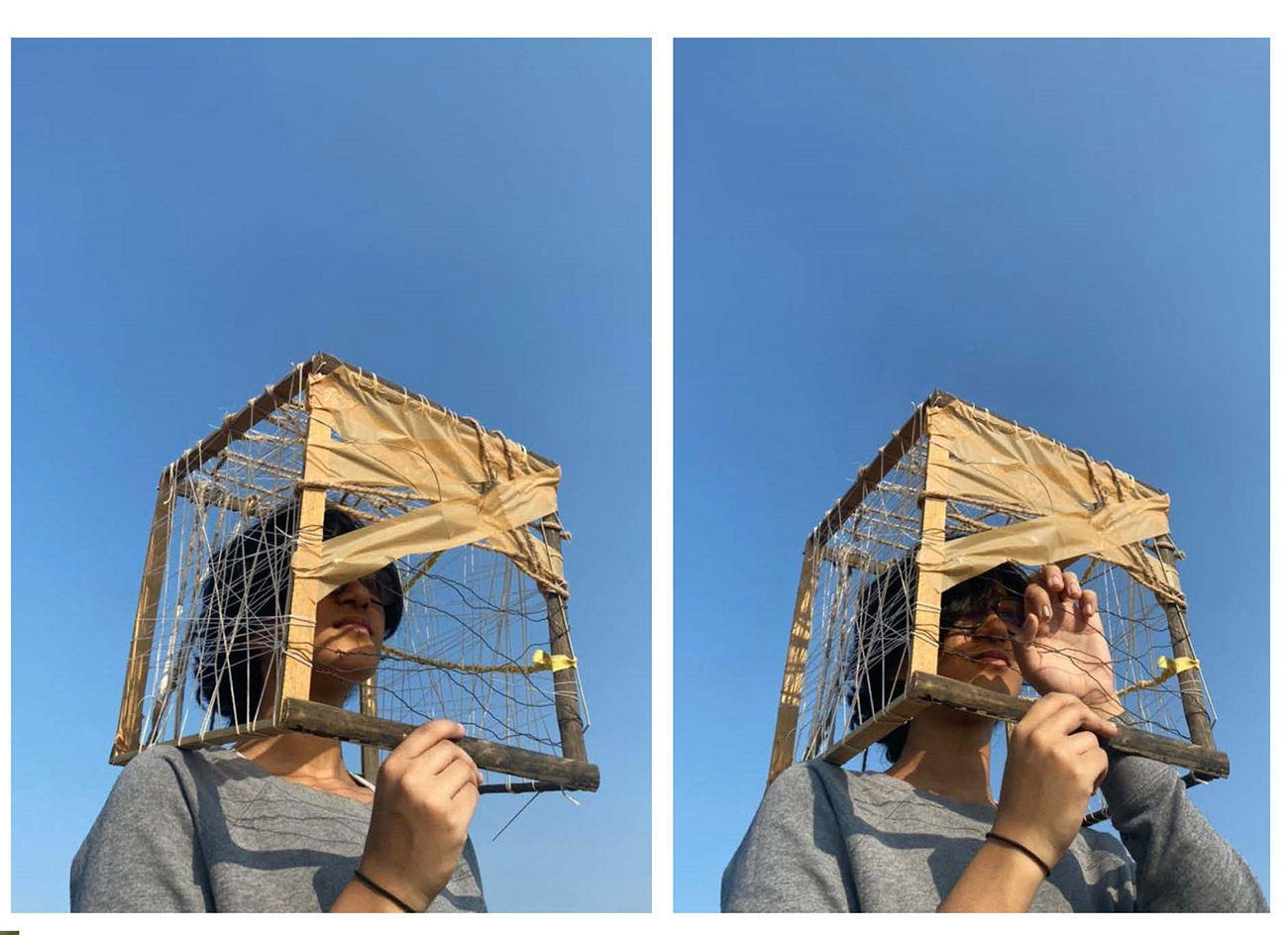
Image: Working with material and body
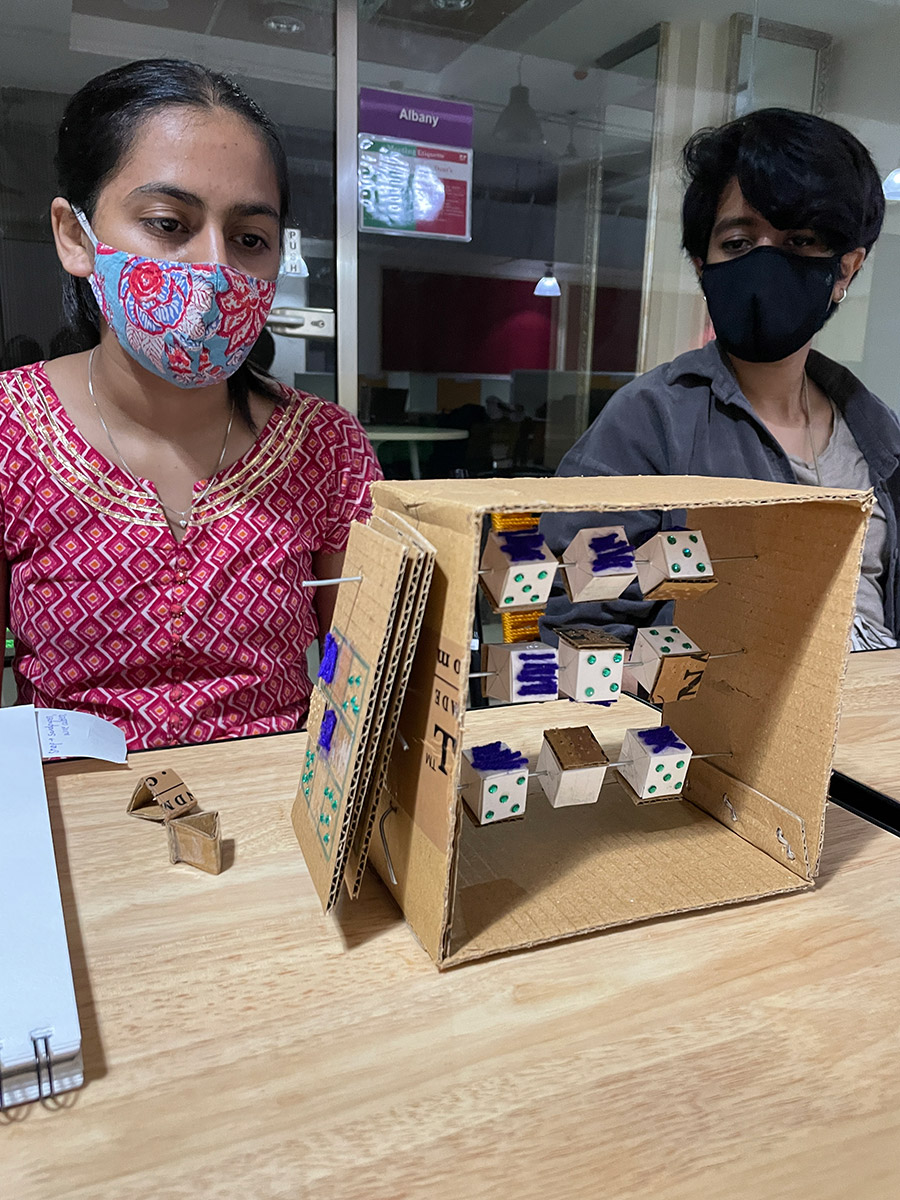
Image: Working with toys
Course Structure
The curriculum comprises of different ways of learning as follows:
- Foundation introduces students to basic principles and tools of Art, Design and Technology as methods, tools and processes. Read more >>
- Disciplinary Studios are learning spaces where students develop core disciplinary capabilities, while navigating a trans-disciplinary environment
- General Studies is a common and compulsory programme of study that integrates Humanities, Sciences, Maths, business and finance. Development and Policy Studies and also offers Languages (Spanish, French and German) Read more >>
- Interim is an immersive introduction to practice in new and emerging areas of art and design and environmental exposure
- Electives are of three kinds - this program allows students to expand their skills, develop the interests as well as provide opportunities for travel exchange
- Internship/Apprenticeship is compulsory work experience done over the summer-break between the 6th and 7th semester
- Project based learning involves the application and synthesis of capabilities acquired. Two projects, pre-thesis and thesis, is culmination of the 4-year undergraduate program, which allows for demonstration of an integration of values, positions, capabilities and practice. Read more >>
Capability Sets
Upon successful completion of this course graduates will have developed the following capabilities::
Capability for making meaning and interacting with the world around you: Engage in the world with curiosity using art, design and technology tools as an extension of your senses; Seek social and ecological harmony in relationships and environments through exploration, negotiation, exchange, collaboration, perspective and reciprocation.
Capability for creative, critical and reflective inquiry: Question, map, identify, take perspective, find patterns, analyse, give and take feedback, use and create tools and techniques of non-linear thinking and inquiry; Document and make visible the learning and thinking of self and others (peers, learning groups and experts in the field) as an engine for creative inquiry.
Capability for thinking through making: Engage in play and speculative experimentation with physical and digital materials and media to nurture ideas, imagination and intuition; Deepen practice through repetition, ritual, iteration, conversation and reflection
Capability for facilitating the learning of others: Animate self, space, material and situation to provoke, evoke and facilitate; Engage with sensitivity, aesthetics and restraint to allow diverse learners to find their own learning rhythms
Capability for developing resourcefulness and adaptability and find opportunities for learning everywhere: Reclaim under-utilised and unproductive spaces and re-imagine them for ecological regeneration and new literacies; Recognise frugality is a value and engage and leverage local resources and non-traditional; learning spaces, people and materials.
Opportunities
The above capability sets equip and prepare the student for a wide range of career opportunities as facilitators, education service providers, researchers, content/artefact designers, entrepreneurs, innovators, resource persons and specialists who:
Deliver facilitated learning experiences and programmes in diverse contexts such as
- Community centres, public spaces and NGOs
- Corporate houses, start-ups and businesses
- Online learning platforms
- Museums, galleries or exhibition spaces
- Publishing houses
- Performing and fine art studios
- Schools and colleges
- New age learning services
- Non-traditional forms of learning centres
- Maker spaces/ Fablabs and laboratories
- Organisations working with transformative and emergent leadership
- Design-led innovation especially in social and ecological innovation
- Technology enabled services for learning
- Skills-based organisations and initiatives
- Innovation Hubs
Design and create artefacts for learning
- Objects and products for learning
- Film, text, new media and digital platforms
- Interactive Technologies and digital platforms
- Toolkits: DIY, DIWO and mobile
- Books, games, and other experiential learning materials
- Learning frameworks and instruction design
Re-imagine, conceptualise and create learning spaces such as
- Community learning centres
- Learning hubs in businesses and corporate houses
- Technoology driven/enabled learning spaces
- Libraries
- Maker spaces and gardens as studio and labs
- Classrooms -online, physical and hybrid
- Schools
- Parks, malls, street and other public spaces
People
Enquiries

Disciplinary Intersections
The course is informed by the following learning disciplines:
Botanical Art
Education
Furniture Design
Film
Game Art, Design and Development
Information Design
Interaction Design
Language Arts
Performing Arts
Photography
Product Design
Psychology
Space Design
Visual Arts
Visual Communication Design
Research and Collaboration
Center for Experimental Media Arts (CEMA)
LeNS LAB – Learning Network for Sustainability
Srishti Labs (Slabs)
FAQs
Do refer to our opportunities section to get an entire list of openings you can avail being equipped with this degree. You can also read the section which talks about what this program equips someone with and why you should choose this program.
If you read the entire description carefully given on the website you will understand that this course does not limit Education at the level of school nor only about traditional or usual ways of Education. It considers the idea of creativity and learning in a transdisciplinary and expansive way.
This program also does not limit facilitation to teaching but facilitation of any kind, form, mode or ways of learning where learning can both be a process or outcome.
- Do you like to facilitate?
- Do you like making, exploring materials and designing things?
- Do you see yourself setting up a maker space or a creative learning space?
- Do you see yourself designing learning experiences, be it in a classroom or outdoors, formal or informal setting, museums or any other places, in public or community spaces?
- Do you enjoy or see yourself working with people of all age groups or from diverse sectors?
- Do you have a wide range of interests in various forms of art and design and your interest is in the processes rather than just the outcome?
- Do you enjoy or see yourself telling stories and dramatizing to provoke and evoke emotions and thoughts?
- Do you get satisfaction in explaining and supporting people in meaning making?
- Do you like to learn new things and persist in figuring things out despite challenges?
- Do you like to play?
- Are you someone who can adapt and be flexible in uncertain and unpredictable situations?
- Are you open to making changes in the way you learn?
- Do you see yourself creating materials and artefacts for others?
If your answer to even half these questions is “yes”, then you will find the Creative Education specialisation fulfilling.
The program in Creative Education offered at Srishti is the only program of its kind in India. It has been envisioned with a foresight into the educational scenarios in the future which will place a high demand on creative educational professionals.
Yes, after the program in Creative Education a student can pursue a masters in India and abroad. They can explore programs that are in education or allied fields of education.
The Creative Education program is not a program for making teachers. Although if someone aspires to engage in teaching or working with teachers, they might benefit from this program. Having said that, Creative Education is NOT equivalent to a B.Ed course, not only in terms of its vision, structure, delivery, capabilities, approaches and intent, it is also quite different from a B.Ed. course in terms of its eligibility criteria. While a B.Ed course prepares teachers for formal learning spaces and institutions, the Creative Education course prepares creative education practitioners to look at ‘learning’ and opportunities for facilitation in areas as diverse as community learning, public learning, new age learning hubs to even learning in corporate houses. The primary focus of the Creative Education course is the ‘learner’ and the learner could be children, teenagers, adults, elderly, community and even public. Thus speculating about scenarios and looking for opportunities for learning and facilitation in diverse contexts are an important skill and practice of creative educators.
Aspiring creative educators also stand out as they are equipped with art, design and technological tools and processes that enables them to bring in innovation and creativity in pedagogy and learning.
In terms of eligibility criteria, a B.Ed course requires a minimum qualification of an undergraduate degree to get enrolled in the course. However, the Creative Education course in Srishti Manipal Institute has the same eligibility criteria as the other undergraduate design course in Srishti Manipal.
The Creative Education course allows you to build on what you already know, whether your background is art, commerce or science. The course is designed to be extremely transdisciplinary. The diverse contexts for learning and facilitation, tools, methods, processes, materials and media embedded in the course will provide you with a lot of opportunities and possibilities to integrate and merge your own interests with the course offerings. Besides, the navigation across diverse courses throughout the semesters will help you find opportunities to combine your interests with the diverse studios offered from different courses. The aspiring practitioners are highly encouraged to immerse in a range of experiences, explore a wide range of contexts and hone their skills and interests in a wide range of practices.
If you still have more questions, you can write to us at sudebi.thakurata@manipal.edu and ask to have a chat.




